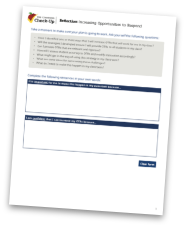Strategy: Increasing Opportunities to Respond
Check-Up Menu > Increasing Opportunities to Respond
Use this strategy to improve these areas:
Overview
An opportunity to respond (OTR) is any time you ask students an academic question (e.g., “What is 4+4?“). OTRs are essential for increasing overall learning, eliciting important academic feedback from students, and increasing on-task behavior. Providing OTRs at a brisk pace can be useful in increasing student attention and engagement because students are required to answer academic questions.
Purpose
Increasing your use of OTRs and using a brisk instructional pace during instruction has been shown to increase student academic engagement. When students are less engaged in instruction, they are more likely to demonstrate off-task or disruptive classroom behaviors.
There are six elements to using opportunities to respond effectively:
1) Ask academic questions that are relevant, meaning they are important and applicable to student experiences, and are provided at the appropriate level of rigor.
2) Incorporate variety and unpredictability into question asking so students learn they can be called on at any time.
3) Use OTRs to stimulate interest, challenge the class, and avoid predictability. Don’t use OTRs to try and catch inattentive students to punish or embarrass them. This can damage student-teacher relationships.
4) Ask group and individual student OTRs using a brisk pace. Having a brisk pace and interspersing between whole class and individual OTRs keeps students engaged.
5) Ensure all students are provided OTRs. Avoid calling on only those students who are more active participants.
6) Use the level of student accuracy to OTRs to inform instruction. When students’ responses are less than 80% accurate for new material or below 90% accurate on review materials, students may benefit from additional instruction and practice before moving on to additional material.
How To
How to Increase Opportunities to Respond in Your Classroom
There are a number of strategies that teachers find helpful in increasing the number of opportunities to respond they provide to students. The following are some ideas that you may find helpful:
- Break complex problems down into smaller chunks, providing opportunities for students to answer for each chunk of the problem.
- Use a deck of note cards or flash cards with drill-and-practice questions. Intersperse individual student responses with group choral responses.
- Have each student use a small whiteboard to quickly write down answers to OTRs, holding it up to show the answer.
- Have each student hold up two-sided cards with yes/no, true/false, agree/disagree with an answer to an OTR. Students could also use thumbs up or thumbs down to agree or disagree with an answer.
- Mix brief, fast-paced teacher-directed review of previous material into every lesson, asking both individual and group responses.
- Ask a question, allow think time, and then call on students without having them raise their hands.
- If a student does not know the answer, allow some think time, then allow the student to “phone a friend” to help with the answer. Return to that student in a few minutes with the same question, giving the student an opportunity to respond correctly.
- Ask an OTR and then draw a stick with a student’s name out of a jar. Once a student answers correctly, remove their stick from the pool until everyone gets a chance (see below).
| If the student response to the question is: | The correct teacher response is to: |
|---|---|
| Correct, quick, and firm | Maintain the momentum of the lesson. Give a quick, “Right,” and present the next question. |
| Correct, but hesitant | Praise the student for the correct response, and then review the reasons for the correct answer or the steps associated with finding the right answer. |
| Incorrect, but a careless error | Give a quick, simple correction and allow the student to provide the correct answer. The feedback should make it clear what the correct answer should be. The feedback does not need to include the reasons why the information is correct. |
| Incorrect, due to lack of knowledge of facts or process | Provide the student with prompts to lead them to the correct answer. Use the correction procedure for academic errors. |
Example Videos:
Individual and Choral Responding
Video Prompts:
- Notice how she moves around the classroom as she asks questions of individual students.
- She intersperses praise and describes what the students are doing well throughout.
- She also asks the students to read and respond together.
- She asks 14 OTRs in just over one minute. Wow!
- What did you like about how the teacher included so many students and asked so many academic questions?
- Why do you think the students were so engaged?
- How might you incorporate some of what you saw and liked about from this video into your classroom practice?
White Board
Video Prompts:
- This lesson demonstrates using white boards during math story problems.
- Notice how the teacher uses a fast pace and lets the students know when they have completed the answer correctly.
- What did you like about how this teacher provided academic questions and gave students feedback?
- How did she make fairly complicated math problems fun and interactive?
- How might you incorporate some of what you saw and liked about how she explained the lesson in your classroom?
Yes Knocks
Video Prompts:
- This is an example of students using a hand shake/yes knock to respond to the teacher’s academic question.
- How might you use this type of opportunity to respond in your classroom?
- What would you do if students were not responding correctly?
Show Answers on Chest
Video Prompts:
- This teacher provides an opportunity to respond by letting all students answer the question and show her on their chest.
- Notice how quickly the students respond, providing the teacher with quick feedback on whether everyone understands.
- What do you like about this way of having students answer?
Strategy Tool

Use the Increasing OTRs in My Classroom strategy tool to help you increase your use of opportunities to respond.
Reflection

Take a moment to make sure your plan is going to work.
Goal Setting

Use the following goal sheet to determine whether or not your strategy produces the results you want.
References to Other Relevant Resources:
Reinke, W., Herman, K., & Sprick, R. (2011). Motivational interviewing for effective classroom management: The classroom check-up. New York, NY: The Guilford Press.
Sprick, R. (2009). CHAMPS: A proactive and positive approach to classroom management. Eugene, OR: Pacific Northwest Publishing.
Haydon, T., MacSuga-Gage, A. S., Simonsen, B., & Hawkins, R. (2012). Opportunities to Respond: A Key Component of Effective Instruction. Beyond Behavior, 22(1), 23-31.


